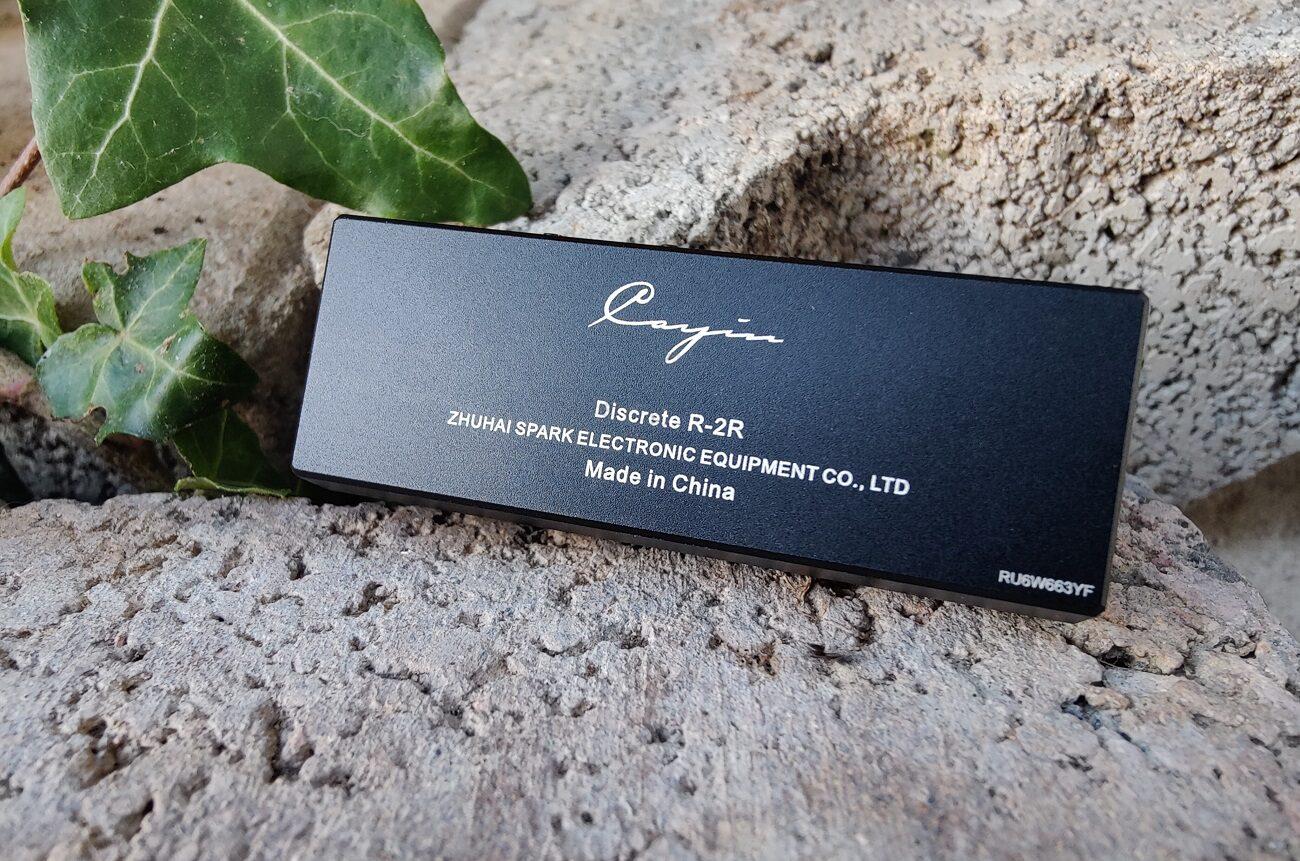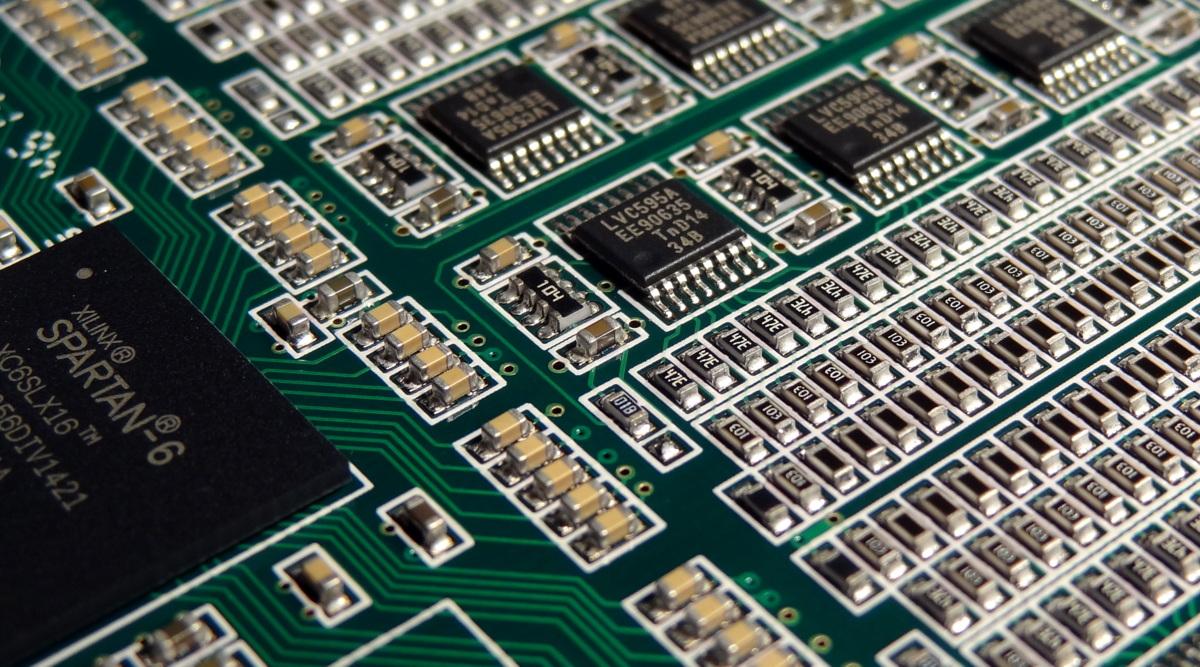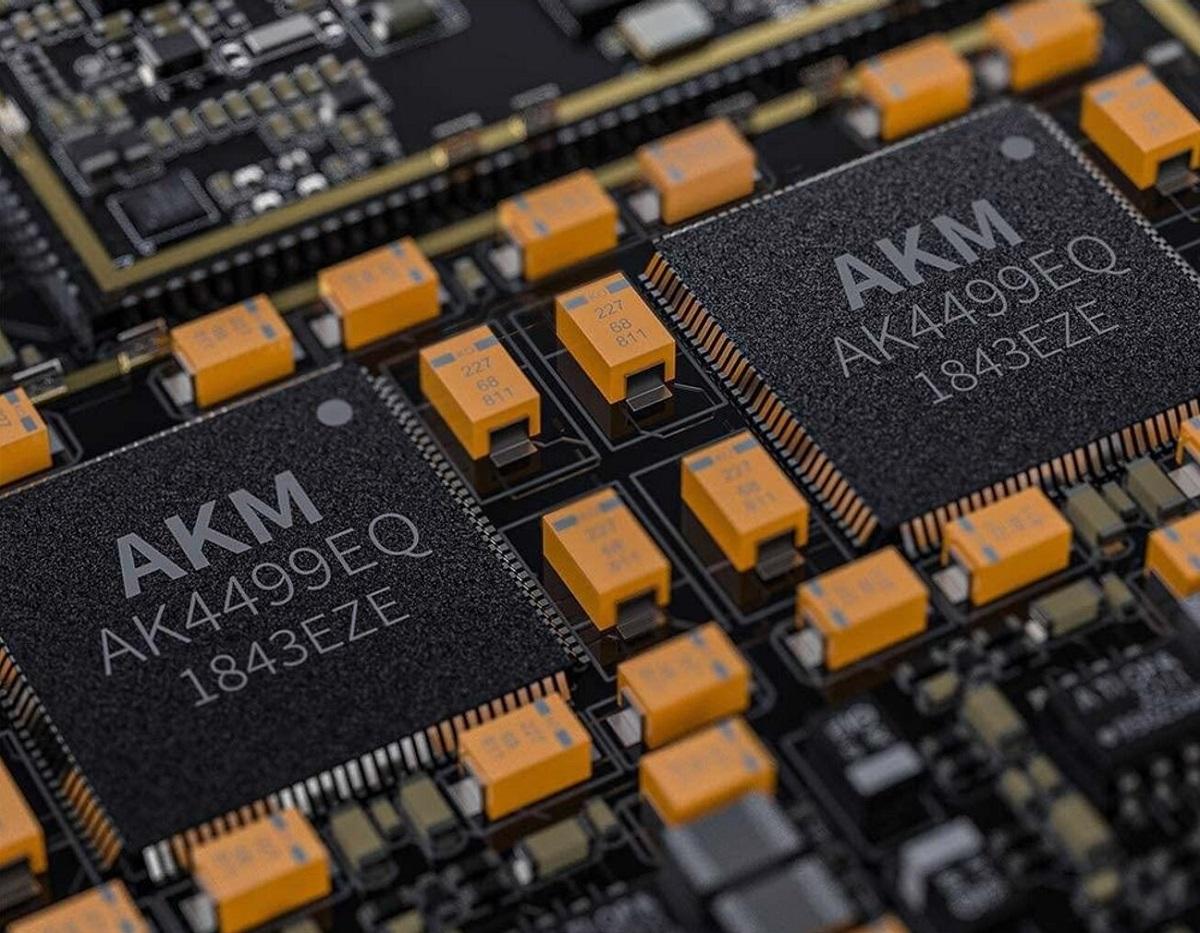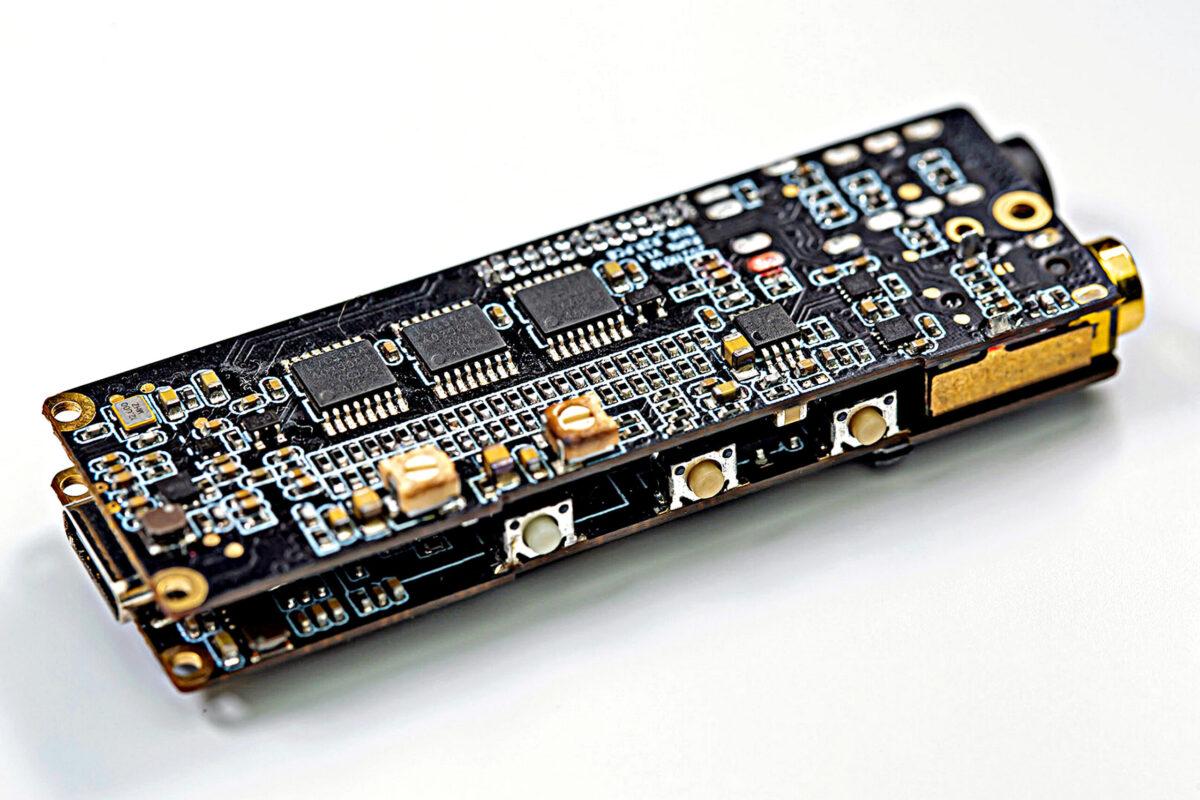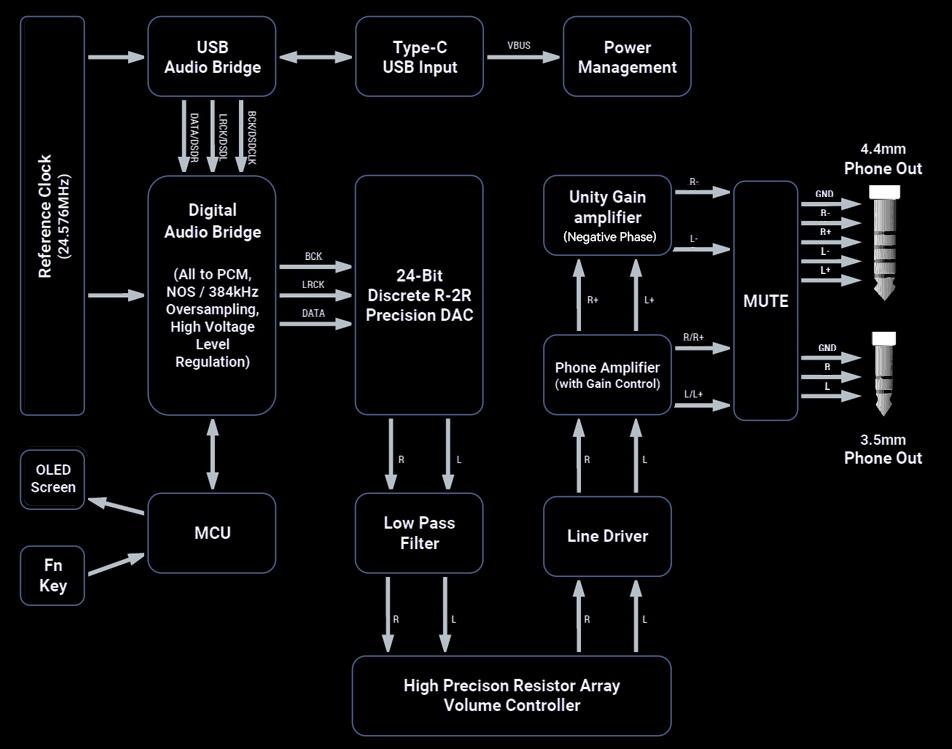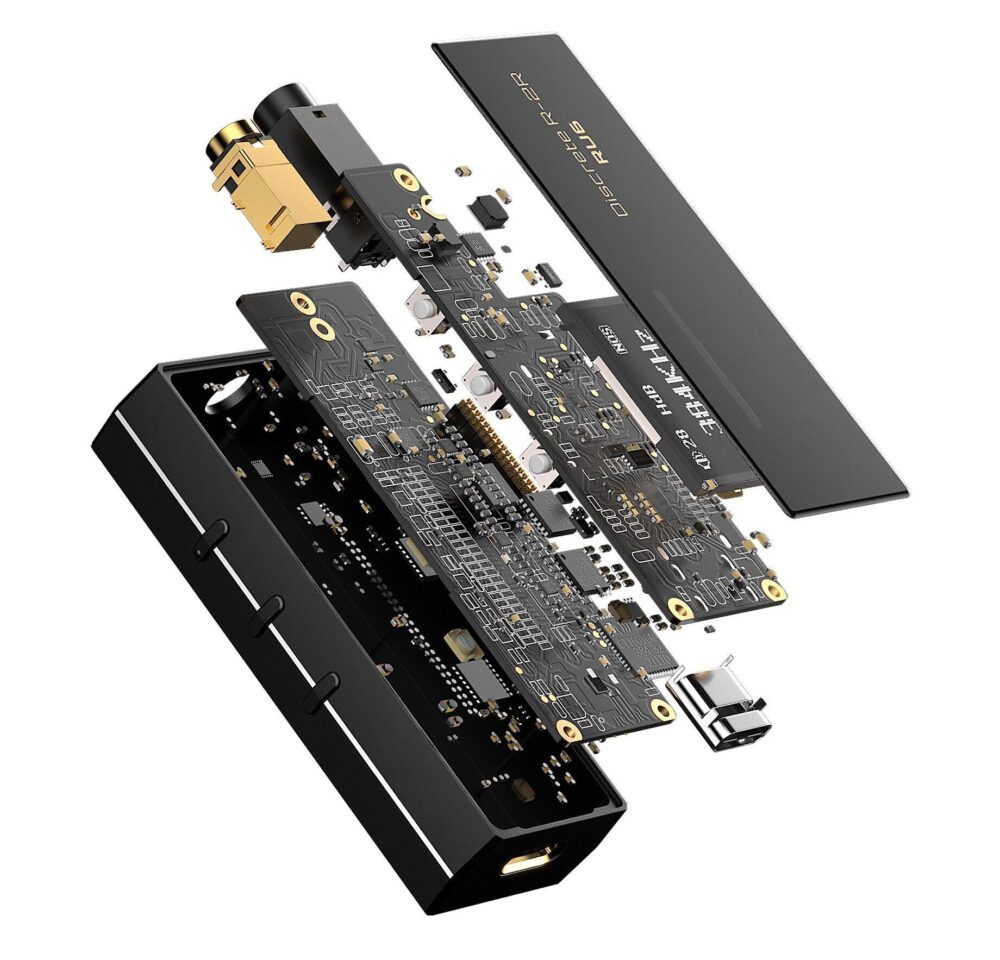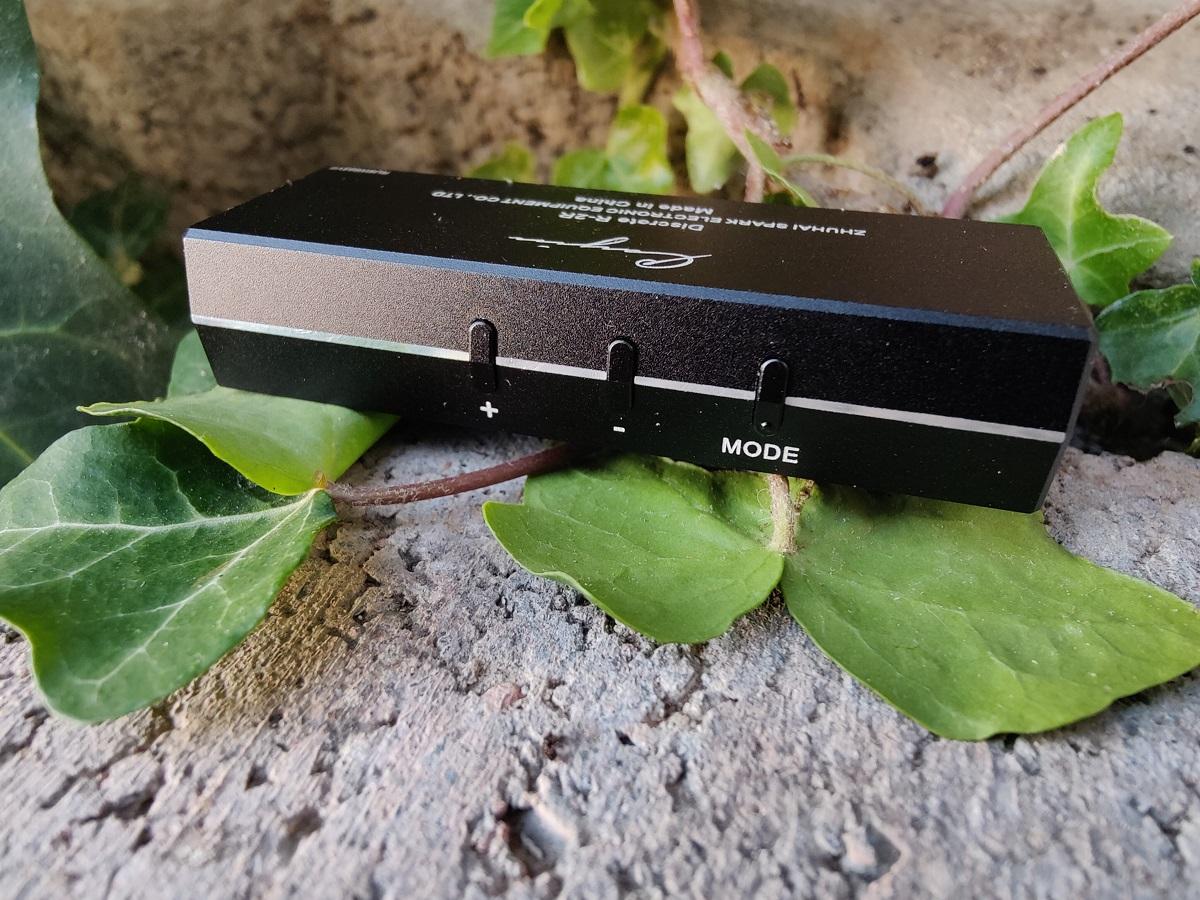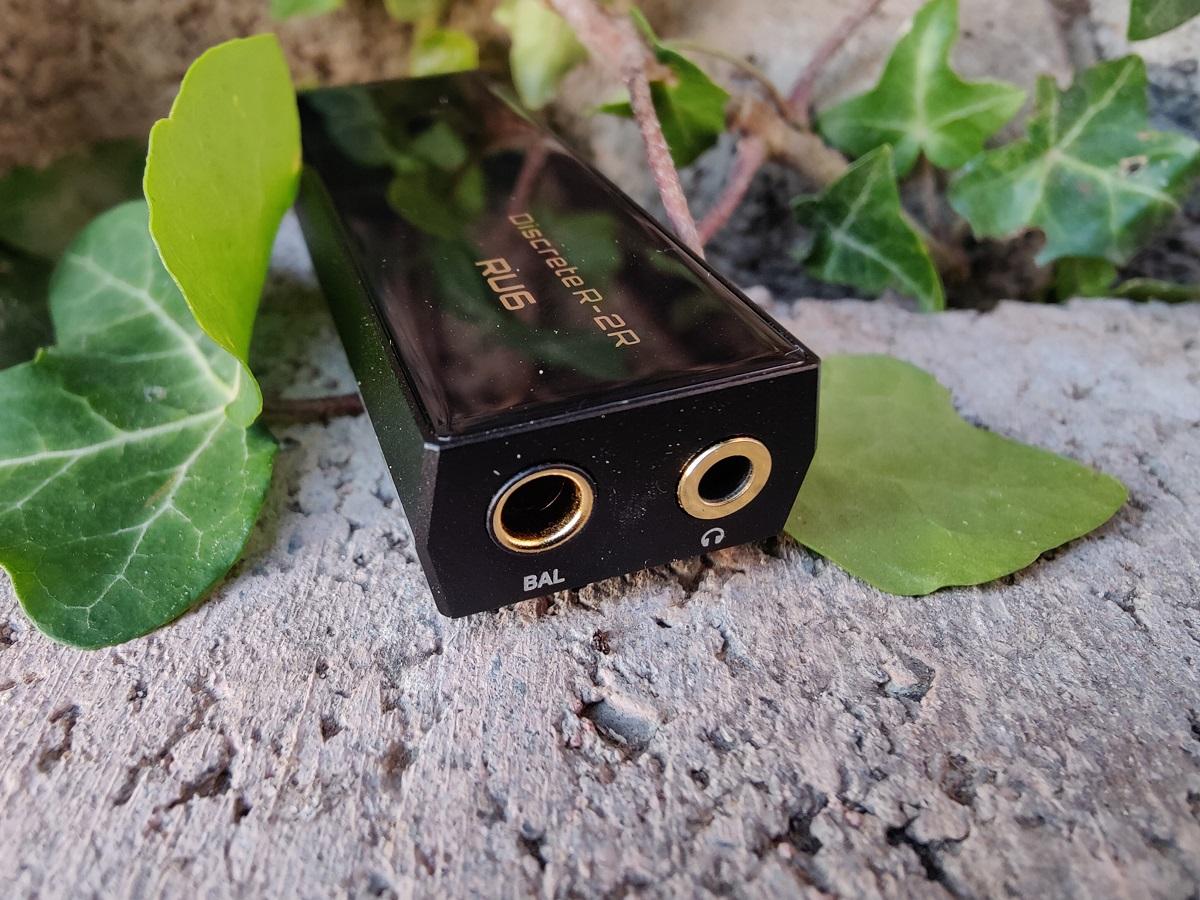Cayin RU6 R-2R USB DAC Review
It’s been 4 decades since the world’s first modern-day DAC chip was designed and manufactured by a company called Burr-Brown Research Corporation in 1982 (acquired by Texas Instruments in 2000).
Most music distributed today is recorded and encoded using a pulse-code modulation (PCM) method. This approximates and records a measurement of audio that represents sound as samples of the original signal amplitude. Multibit DACs decode PCM signals with a true 16 or more, a bit-to-bit process that preserves the original PCM samples.
R2R (Resistor to Resistor) DACs
This conversion of the binary signal (1s and 0s) which represents a number that determines the value of the output voltage, is done by an array of resistors, R and 2R, in a ladder formation. Each set of resistors acts as current dividers organized in ascending order. An instantaneous conversion takes place where bits are translated simultaneously and does not require any oversampling. This is why true R2R DACs are also known as Non-Oversampling (NOS) DACs.
It is a popular method used in high precision equipment but producing such converters at high levels of accuracy can get very expensive and is mainly used in premium flagship audio DACs, lately also in some premium flagship digital audio players, DAPs. The extremely precise resistor arrays that have to be laser-trimmed in production, mean production times can be lengthy.
Due to the increasing costs for the production of R2R DACs, there has been a surge in the popularity of a cheaper alternative that does not require the same high-precision manufacturing process, these are known as Delta Sigma chips.
Delta Sigma DACs
Delta Sigma chips use a delta-sigma modulation method to convert high-bit-count, low-frequency digital signals into lower-bit-count, higher-frequency digital signals. As mentioned earlier this DAC architecture is a lot more cost-efficient and has a reduced circuit complexity, resulting in it being increasingly used in modern electronics.
In order to achieve the resolution required for music reproduction, oversampling is used. One of the drawbacks to this method, some might say, is that a very high level of noise is generated. To make the chip usable, sound engineers have developed many methods of sound shaping, demodulation, and low pass filters that redirect this noise to frequencies above the audible range.
R2R Resistive Ladder
As its name implies, the “ladder” description comes from the ladder-like configuration of the resistors used within the Resistive Ladder network. An R2R resistive ladder network provides a simple means of converting digital voltage signals into an equivalent analog output. The output signal as a result of all these input voltage points is taken from the end of the ladder which is used to drive the inverting input of an operational amplifier. Then the R2R resistive ladder network is nothing more than long strings of parallel and series-connected resistors acting as interconnected voltage dividers along its length, and whose output voltage depends solely on the interaction of the input voltages with each other.
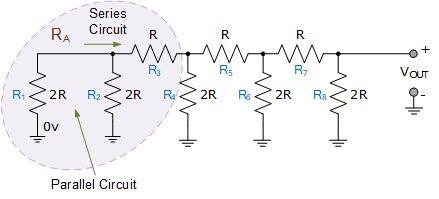
Using an R2R resistive ladder network and adding it to an inverting operational amplifier circuit, we can create a simple R2R digital-to-analog converter, DAC.
But there is nothing simple about Cayin‘s portable RU6 R-2R USB DAC. I tried to explain what the R-2R term on the RU6 means as simply as I can. Cayin used 96 (48 x 2 for left and right channels) high-precision (±0.1%) low TCR (25ppm/℃ temperature coefficient of resistance) resistors for the RU6 on a tiny PCB which is remarkable. The RU6 is based on Cayin’s 24-bit discrete R-2R DAC circuit from R01 Audio Motherboard for N6ii DAP, with different quality resistors though, to keep the cost down at a logical level.
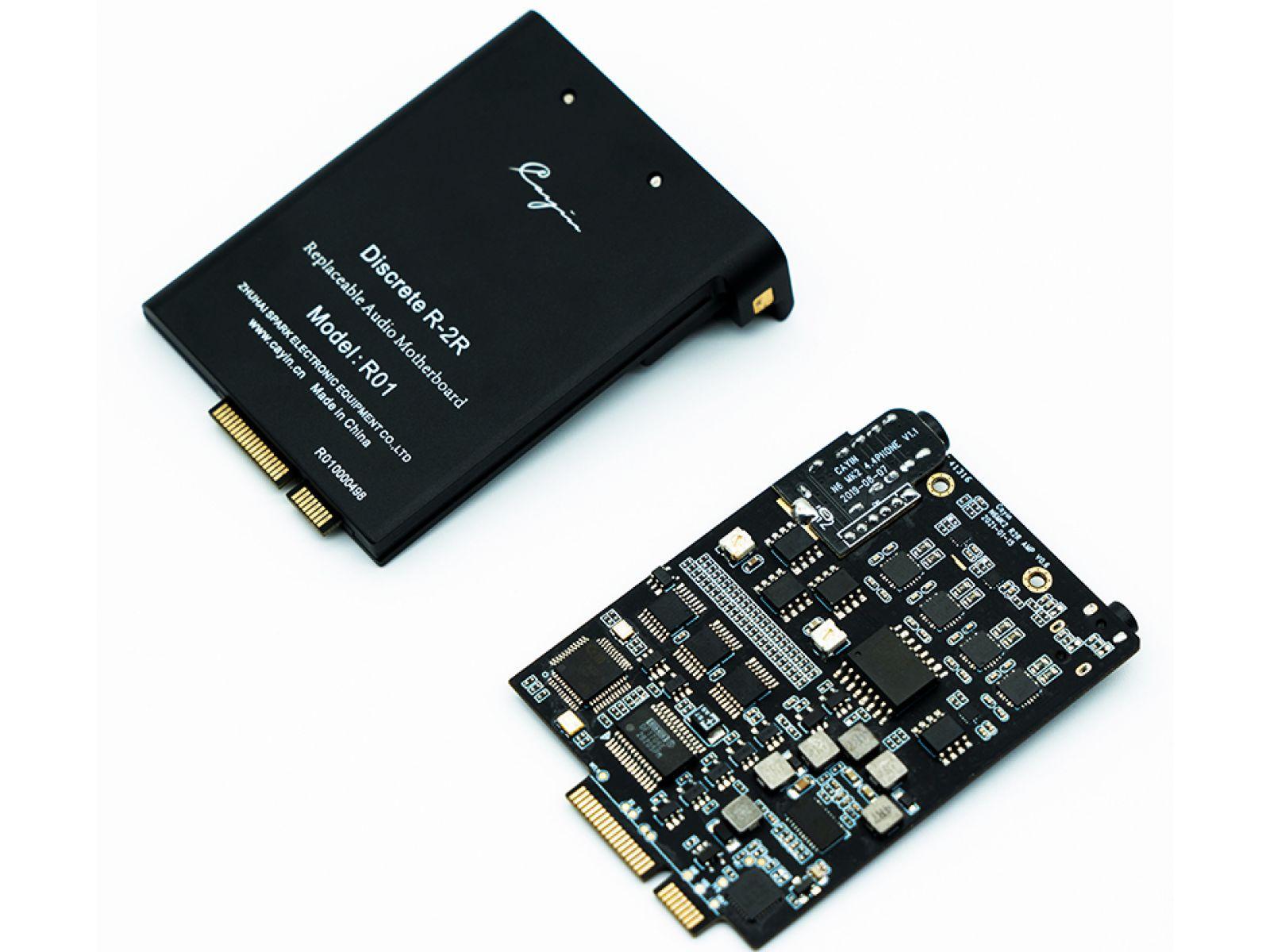
The digital audio section of the RU6 DAC circuitry can be divided into four subsystems.
- USB Audio Bridge for receiving different audio formats from USB, go through high precision signal enhancement, and output I2S bit-stream for subsequent processing.
- Digital Audio Bridge for converting DSD to PCM and converting all audio signals to the left and right channels of 24 Bit/384kHz serial audio data signal.
- Serial to Parallel Shift Register for converting serial data signal to parallel data signal and transmitting to DAC circuit
- 24-Bit Discrete R-2R Precision DAC for converting digital audio signal to analog audio signal through a high precision R-2R Resistive Ladder Network.
To minimize interference, RU6’s circuitry is split into two 6-layer PCBs, with digital and analog circuits installed on separate boards. Also, a safeguard signal integrity makes sure the noise from the reference clock and DSP will not bleed the intro amplification circuit.
Discrete Volume Control
R-2R DAC circuit is very demanding on incoming data integrity, and the digital volume of mobile phones will damage sound quality badly. When off-the-shelf volume options cannot meet the high precision, low noise, and low power consumption requirements of RU6, Cayin developed its own discrete resistor array 0-99 steps volume control. For these reasons, a Music player App supporting bit-perfect USB is recommended. For applications that don’t provide similar features, you’ll need to manually turn the volume to full from the software. Cayin has built a 9-segments resistor array volume control in the dongle DAC in order to complete the design. While resistor array volume controls are generally considered high quality and extremely transparent, they will generate a pop noise when you move between array segments. As a result, RU6 needs to introduce a ~40ms short mute to stop that noise from getting into the amplification circuit, that’s why you might experience a short pause whenever you adjust the volume for 10 steps.
NOS and OS Dual DA Mode
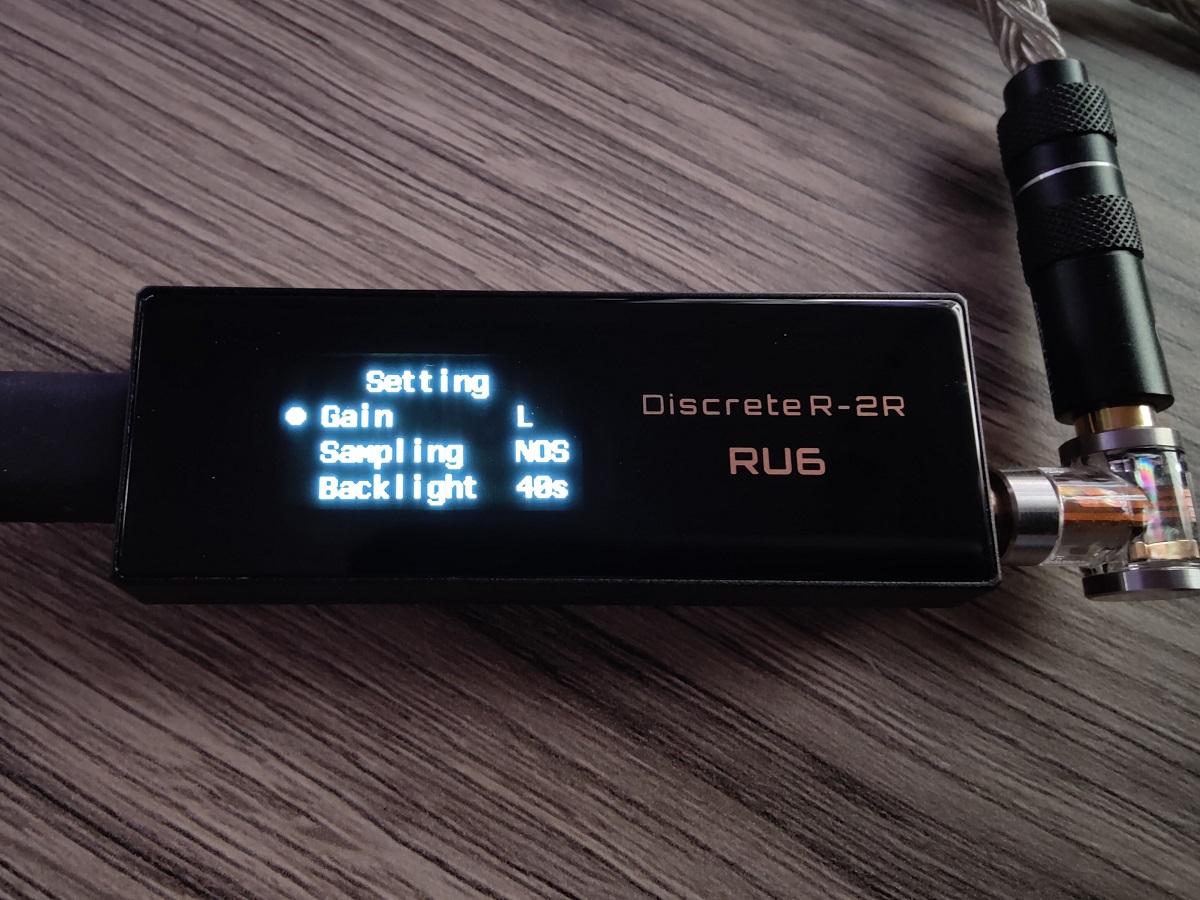
“In oversampling mode, the digital audio bridge of the Cayin RU6 upsamples the digital audio data to 384kHz through digital filtering. This increases resolution reduces noise and improves the anti-aliasing of the digital signal. The oversampling DA mode thus enables a significant improvement in the reproduction of details and an extended frequency range of the audio signal”. In simpler words digitally touched sound.
“On the other hand, the NOS-DA mode preserves the sample rate of the original bit stream. This disables the digital filters and preserves the signal in a perfect time sequence. This means that phase distortion and jitter remain at a very low level with no artifacts in the output signal. The playback is therefore very musical with a natural, organic, and coherent flow of sound”. This mode is more like a pure R-2R digitally untouched sound.
What’s in the box
Specs
- 24-Bit Discrete R-2R Resistor Ladder DAC
- PCM: 44.1kHz-384kHz, DSD: 64/128/256
- User-selectable NOS/OS DA Mode
- Multi-segments High Precision Resistor Array Volume Control
- Compact and seamless CNC aluminum chassis with 0.96″ 128×64 OLED Screen
- 65mm x 25.4mm x 13.7mm, 28g
- Hardware Volume +/- button
- Two 6-layer PCB, digital and analog circuits on separate boards
- 3.5mm single-ended phone output delivers 138mW per channel at 32Ω loading
- 4.4mm balanced phone output delivers 213mW per channel at 32Ω loading
- 1.0Ω output impedance for 4.4mm, 0.5Ω output impedance for 3.5mm output
- Compatible with Android, iOS, macOS, Windows 7/8/8,1/10, and DAP with USB Audio output
- Type-C USB Audio, Shield USB-C to USB-C cable bundled.
- High/Low gain control
- Optional Leather cases: Orange or blue
- Optional USB-C to lightning cable
- Price: 249$ (no affiliate links).
I would like to thank Mr Andy Kong from Cayin Audio for providing me with the review sample of RU6 R-2R.
Sound
If you are used to a typical Delta-Sigma DAC (ESS, AKM, etc) sound signature, then switching to an R-2R DAC will give you a very different experience. What I can tell you is that the general tone of the Cayin RU6 faithfully follows the ‘R2R’ signature sound. For me, that is a very natural quality to its instrumental and vocal timbre and a highly engaging level of detail within its texture. Importantly, the Cayin RU6 has what I also like to refer to as a ‘lack of delta-sigma shine’ in the way it resolves every note struck and every detail pushed forward. Now that does not mean bright, but rather the notes have a bit more character, involving from attack through the sustain, and onto the way the decay resolves.
With delta-sigma DACs such as the ddHiFi TC44C, you get a digital interpretation that is normally crazy good on articulation and heavy on complexity. However, at the same time, you often get a feeling that the ‘moment’ passes you by so quickly and you are onto the next note, and the next note, and so forth. With the Cayin RU6, each note sounds like an ‘event’, hitting with some awesome solidity and dynamic presence. There is less of an emphasis on the surrounding wall of spatial cues dancing around you and more of a determined focus on how each note unfolds and what it offers. You could argue that there is an almost analogue-type quality to performances except the Cayin RU6 resolves so much better than something from a bygone era. Perhaps that is what makes the Cayin RU6 so unique.
After 100 hours of burn-in
After plenty of hours of keeping it warm, the Cayin RU6 offers a full-bodied but also very balanced tonal charm. I have a desktop stack which is Khadas Tone2 Pro DAC balanced connection to an xDuoo MT-604 hybrid tube AMP. I always loved the sound of this combo and thought I won’t need a better source. Cayin RU6 is giving me that “analog” vibe with more technicalities in a portable and cheaper form factor comparing the prices.
I suspect there is a very slight fade into the treble which is a little more pronounced in NOS mode. That delicate treble fade plays a major role in pulling your listening focus just ever so slightly into a very vivid-sounding lower treble and upper mids presence.
And yet, the percussion timbre is not splashy whatsoever. I hear every cymbal crash and bell clatter coming across clear as day with tons of textural detail but with the perfect attack and decay balance. Life-like but life-like in a slightly pleasing manner. Giving most instruments some heft and warmth for a very listenable quality. Oh, and vocals. Almost perfect for my tastes sounding slightly forward with some gorgeous body and confident handling of any naturally occurring sibilance. That applies to both male and female vocals by the way.
Staging
The Cayin RU6 headroom is excellent with plenty of air and separation but more to the natural side in terms of treble forwardness. What Cayin RU6 has is stellar control and placement from top to bottom to create a very strong sense of open space, especially in terms of width.
Sum-Up
As far as I know the cheapest R2R DAC solution, in the form of a DAP, starts at 1500$ minimum and rises up. Cayin gave us a glimpse into the premium audio world for 250$ with the RU6 R-2R. Some may say that there are still big differences in audio performances. I say that the RU6 is the end-game DAC for many out there including me and even a collector’s item because it is one of its kind and I don’t think there will be any other portable USB DAC in the near future with the R2R technology in it.

